What is Hip Bursitis? Injury Overview
Are you worried about hip bursitis?
Read on to find out what causes hip bursitis, how to treat it, and everything else you need to know.

What is Hip Bursitis? Injury Overview
Are you worried about hip bursitis?
Read on to find out what causes hip bursitis, how to treat it, and everything else you need to know.
Related Articles
- Hip Bursitis: Injury Overview
- The Best Hip Bursitis Treatments
- The Best Hip Bursitis Exercises & Stretches
- Hip Bursitis Exercises to Avoid
Hip pain affects millions worldwide, with one of the most common causes being hip bursitis. The condition affects 15% of women and 8.5% of men of all ages in the United States alone. But what causes hip bursitis?
This painful condition occurs when the small, fluid-filled sacs that cushion the hip joint become inflamed. That's quite painful and inconvenient for active individuals, as the hips are crucial for movement. They're responsible for supporting the weight of your body and allowing you to walk, run, and jump.
If you're experiencing pain in the outer part of your hip, read on for an overview of hip bursitis, including common symptoms and treatment options.
What is Hip Bursitis?
If you're experiencing pain in your hips that worsens with walking, running, or even standing for extended periods, you may be experiencing hip bursitis. But what is bursitis of the hips, and how do you distinguish hip bursitis symptoms from other hip pain?
When hip bursitis occurs, it means there is an inflammation of the bursae in the hip joint. Bursae are small sacs of fluid that cushion the joints and reduce the friction between the bones, tendons, and muscles. When there is an overuse or excessive pressure on the bursae, they become irritated and inflamed, leading to hip bursitis.
The hip joint has three major bursae: the greater trochanteric bursa, the iliopsoas bursa, and the ischial bursa. These bursae can be individually affected by hip bursitis, leading to distinct types of hip bursitis.
Greater Trochanteric Bursitis
Greater trochanteric bursitis is the most common type of hip bursitis.
The greater trochanter is a large bony protuberance outside the hip bone. The bursa that sits over the greater trochanter helps reduce friction between the tendons and the hip bone. When this bursa becomes inflamed, it can lead to pain outside the hip extending down the thigh.
Iliopsoas Bursitis
The iliopsoas muscle is located on the front of the hip joint and helps in hip movement. The iliopsoas bursa is a small fluid-filled sac that sits over the iliopsoas muscle and cushions it from the hip bone. When this bursa becomes inflamed, it can cause anterior hip and groin pain.
Ischial Bursitis
The ischium is the bone you feel when sitting on a hard surface and sits between this bone and the gluteus maximus muscle. When this bursa becomes inflamed, it can cause pain in the buttocks that can extend into the back of the thigh.
Causes and Risk Factors
Understanding what causes hip bursitis (and risk factors) is crucial in receiving proper treatment. From overuse to underlying medical conditions, there are a variety of factors that can contribute to the development of hip bursitis.
Common Causes of Hip Bursitis
Hip bursitis isn't the only condition that can cause discomfort, stiffness, and hip pain. So, to try and rule out hip bursitis, your doctor will likely ask if you experience one of the following three issues.
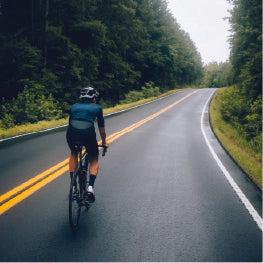
Repetitive Motions
One leading cause of hip bursitis is overworking the hip joints, often due to repetitive motions. For example, avid runners, joggers, or cyclists may be more prone to hip bursitis because of the consistent impact and pressure placed on the hip joint during exercise.
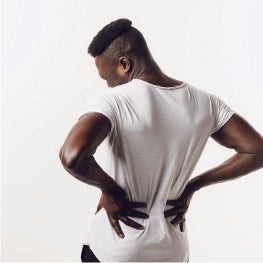
Hip Injuries
Hip bursitis can also result from hip injuries, particularly to the hip joint, such as falls or car accidents. Additionally, pre-existing conditions such as osteoarthritis can increase an individual's likelihood of experiencing bursitis.
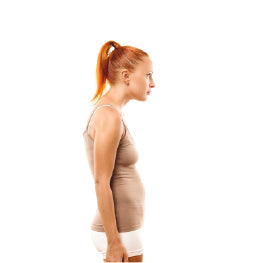
Poor Posture
Poor posture can strain the hip joint, promoting inflammation and bursitis. Sitting for long periods or carrying heavy bags can also impact an individual's hip joint, potentially leading to hip bursitis.
Who's Most At Risk of Hip Bursitis?
Athletes, especially runners and soccer players, are particularly susceptible to developing this condition due to frequent hip movements that cause friction and inflammation. Those who engage in manual labor, such as construction workers or landscapers, may also experience hip bursitis due to repetitive movements and stress on the hip joint.
As mentioned above, individuals who have had hip surgery are also at an increased risk of developing hip bursitis, as the surgery may have caused damage to the bursa and surrounding tissue. In addition, those with pre-existing medical conditions are also more likely to develop hip bursitis, including the following:
- Arthritis
- Psoriasis
- Diabetes
- Thyroid disease
- Scoliosis
- Bone spurs
Interestingly, hip bursitis is more common in women and middle-aged or older adults. Women are more susceptible due to the shape and size of their hips, and the onset of hip bursitis tends to increase as people age.
Diagnosis
Hip bursitis can be a challenging and painful condition to diagnose. However, early detection and accurate diagnosis are crucial for a speedy recovery. While your diagnosis might depend on your doctor and how severe your symptoms are, here are three of the most common ways we diagnose hip bursitis.
Hip Bursitis Tests
When diagnosing hip bursitis, the first step is a thorough physical examination. This involves checking for tenderness, swelling, and warmth over the affected hip. Your healthcare provider may also test your range of motion and ask you to perform certain movements that trigger bursitis pain.
X-Rays
X-rays are also commonly used to diagnose hip bursitis, as they can detect bone deformities and rule out other conditions, such as fractures and arthritis. X-rays, however, will not show inflammation or soft tissue swelling, which are clues to the diagnosis of hip bursitis.
Ultrasound/MRI
If your healthcare provider suspects hip bursitis, they may also recommend an ultrasound or hip MRI. These imaging techniques can provide detailed images of the hip's soft tissues and fluid-filled sacs. They can confirm the presence of bursitis and help identify potential underlying causes, such as:
- Tears
- Cysts
- Joint Damage
One advantage of ultrasound is that it is a real-time test, meaning that pictures can be taken while the doctor moves the tendons or muscles in the hip. An MRI, on the other hand, provides a more detailed view of the injury and surrounding structures.
Symptoms of Hip Bursitis
Can hip bursitis cause back pain? Where do you typically feel hip bursitis pain? These are common questions, and over the years, we've developed a library of common symptoms and answers to help you understand what you're feeling (in the hopes of helping you reach a diagnosis faster).
Where Do You Feel Hip Bursitis?
Hip bursitis symptoms are typically felt in the hip region, but the exact location and pain intensity can vary based on the individual.
Typically, the pain is felt in the outer part of the thigh near the hip joint. Sometimes, the pain can extend down the leg towards the knee or the buttocks region. The affected area may also feel tender, swollen, or warm.
Pain and Stiffness
One of the most common hip bursitis symptoms is pain and stiffness in the hip region. The pain may worsen when you walk, run, or climb stairs. You may also feel stiffness and discomfort when moving your leg to the side or behind you.
Limited Mobility
Hip bursitis often causes limited mobility in the hip joint. You may find it difficult to move your leg and perform certain activities, such as bending over or lifting objects.
Swelling and Redness
When the bursae become inflamed, the affected area may appear swollen, red, and tender to the touch. This can also cause the skin to feel warm to the touch.
Clicking or Popping Sounds
Finally, some people with hip bursitis may experience a clicking or popping sound when moving their hip joint. This can be due to the inflammation and irritation of the bursae near the joint.
Recovery and Rehabilitation
Hip bursitis can be painful, but the good news is that recovery and rehabilitation are often possible without invasive treatments. Below are a few of the most common treatment methods and what to expect during rehabilitation.
Hip Bursitis Treatments
Speak with a healthcare professional before beginning any treatment regimen to ensure you receive the appropriate care for your needs. However, treatment for hip bursitis usually includes one of the following methods.

TENS Therapy
A non-invasive treatment method, Transcutaneous Electrical Nerve Stimulation (TENS) therapy involves using electrical impulses to stimulate the nerves in the affected area. This helps to suppress the pain signals sent to the brain, thereby reducing the sensations of discomfort.

Red Light Therapy
Red light therapy uses low-level lasers or lamps to activate healing cells in the body. This method effectively reduces inflammation and promotes healing in the hip area.

Hot & Cold Therapy
Alternating between hot and cold compresses can also effectively reduce inflammation and soothe sore muscles. Hot compresses help to increase blood flow to the affected area, while cold compresses can help to numb the area and reduce swelling.
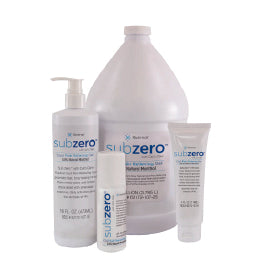
Pain Relief Gel
Only have a mild case of hip bursitis? You can rub over-the-counter pain relief gels, such as ibuprofen gels, onto the affected area to help reduce inflammation and alleviate pain.
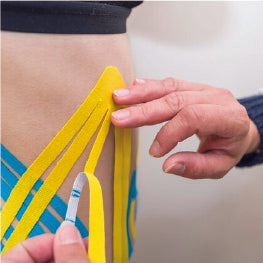
Hip Support
Sometimes, your doctor might recommend wearing a hip brace or another type of hip support. These braces can reduce tension and support the hip as it heals.

Cortisone Injection
A cortisone injection may be recommended if other treatment methods haven't provided sufficient relief. This injection delivers a potent anti-inflammatory medication directly to the affected area, providing rapid relief of pain and inflammation.

Asipiration
Finally, your doctor might recommend aspiration, which removes excess fluid from the inflamed bursa using a needle to aspirate the fluid. This could relieve the swelling and pain.
Hip Bursitis Recovery
Hip bursitis recovery is a gradual process that requires patience and consistency. Most patients can expect a hip bursitis recovery time between six weeks to three months, depending on the severity of their injury. During this time, rehabilitation is key to:
- Restoring joint mobility and strength
- Reducing pain and inflammation
- Preventing future injuries
Rehab programs may include a combination of physical therapy, anti-inflammatory medication, and rest. Patients must also avoid activities that require excessive hip flexion or rotation to prevent reinjury. With proper care and diligence, many individuals with hip bursitis can resume normal activities and enjoy a pain-free life.
Prevention
Prevention is key regarding hip bursitis, especially if you have experienced it before. Here are a few hip bursitis prevention tips you can follow to prevent it from recurring:
- Use padding when sitting
- Lift properly
- Take frequent breaks from repetitive tasks
- Maintain a healthy weight
- Exercise to regain flexibility and strength
- Warmup and stretch before strenuous activities
- Practice proper posture
- Avoid lying on one side for too long
- Avoid overuse injuries by mixing in exercises that use different motions
- Avoid lifting heavy objects without help or assistive devices
Protecting your hips with padding is perhaps one of the best prevention tips. Don't be afraid to invest in proper footwear or other protective gear if participating in high-impact activities or sports. The added cushioning can help prevent unnecessary strain on your hips.
Additionally, it's extremely helpful to perform hip bursitis exercises. These include hip rotator stretches and bridges, among other exercises.
Living with Hip Bursitis
One key to living with this condition is staying active without overworking the affected area. Low-impact exercises such as swimming, cycling, and yoga can be great options to keep the body in motion without causing additional pain.
Additionally, avoiding activities that place unnecessary pressure on the hip joint, such as sitting and standing for long periods or crossing your legs, can help alleviate symptoms.
It's also crucial to pay attention to your posture and mechanics. As mentioned, poor posture can strain the hips unnecessarily and contribute to increased pain and inflammation. Make sure to sit and stand up straight and practice good alignment during exercise and other physical activities.
Finally, don't hesitate to seek professional help if you're struggling with hip bursitis. Physical therapy, anti-inflammatory medication, and corticosteroid injections are all potential treatment options to help manage pain, improve mobility, and enhance your quality of life.
More Health News
Understanding what causes hip bursitis is crucial in preventing and treating this painful injury, and Carex products, such as compression sleeves and ice bags, can aid in the recovery process.
However, knowledge goes a long way in preventing hip bursitis. Want more injury insights and exclusive product deals? Sign up for our newsletter now!
About the Author

Brandon Landgraf is the Digital Marketing Manager for Carex Health Brands. He finds passion and fulfillment in creating content that enhances, improves, and enlivens others' quality of life. All of his written work is formulated to not only offer essential advice and tips but back it with proven studies and experts. His mission is to connect with readers and provide steps to make their lives better.
You can connect with him on LinkedIn here.
About Carex Health Brands
Carex is your one-stop shop for home medical equipment and for products that assist caregivers with providing the best possible support and care for their loved ones. Carex Health Brands has been the branded leader in in-home, self-care medical products for over 35 years. Our goal is to improve the lives of our customers by bring them quality products that bring dignity back to their lives. With our three nationally distributed brands, Carex Health Brands serves national, regional and independent food, drug and mass retailers along with wholesalers, distributors and medical dealers.

